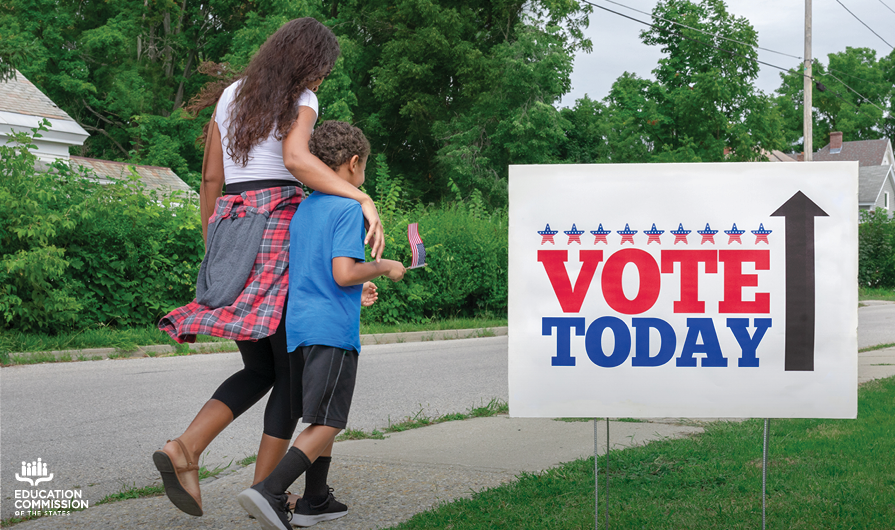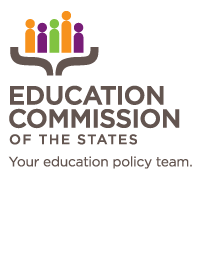As we get closer to the 2024 elections outcomes, we’re tracking the races and initiatives that will impact the future of American education policy. We’ll deliver you the results on elections for governors and state legislators, contests for board of education seats, races for chief state school officers and relevant ballot measures to keep you informed on potential implications for state leaders, educators, students and families.
Gubernatorial Races
In eleven states — Delaware, Indiana, Missouri, Montana, New Hampshire, North Carolina, North Dakota, Utah, Vermont, Washington and West Virginia — gubernatorial races could influence education policy at the highest level within the state. Eight of these states are guaranteed new executive leadership. The governors of Delaware, Indiana, Missouri, North Carolina and West Virginia are each at the end of their allowed terms, and the governors of New Hampshire, North Dakota and Washington have declined to seek additional terms.
Governors are influential not only in setting the political tone of their states but also through their appointment authority. In Delaware, Indiana, New Hampshire and Vermont, the governor directly appoints the chief state school officer.
Ten of these eleven states (all but Utah) have governance structures where the governor appoints at least one member to the state board of education.
American Samoa and Puerto Rico will also hold gubernatorial elections in 2024.
State Legislative Elections
Seats in 42 Senate chambers (including the unicameral Nebraska State Legislature) and 43 House chambers are up for election in November. The outcomes will determine legislative control and policy agendas in many states, including leadership of the approximately 150 education-related legislative committees around the country. Only Alabama, Louisiana, Maryland, Mississippi, New Jersey and Virginia are without state legislative elections this fall.
Chief State School Officers
In Montana, North Carolina, North Dakota and Washington, voters will directly elect the leadership of their state’s departments of education. Long-serving Superintendent of Public Instruction Elsie Arntzen’s departure opens up a race between two newcomers in Montana. Similarly, the North Carolina election sees two new candidates for state superintendent following Superintendent Catherine Truitt’s primary defeat earlier this year. In North Dakota and Washington, incumbents Kirsten Baesler and Chris Reykdal will each face new challengers. Superintendent Baesler is the longest-serving chief state school officer in the country, first elected in 2012, and Superintendent Reykdal is seeking his third term.
State Board of Education Elections
In nine states — Alabama, Colorado, Kansas, Michigan, Nebraska, Nevada, Ohio, Texas and Utah — voters will elect members to their state boards of education. Notably, in states like Alabama, Colorado, Kansas, Michigan, Nebraska and Ohio, the State Board of Education is responsible for appointing the Chief State School Officer, which further influences the direction of education policymaking. For these races, it’s important to note that:
- Alabama and Colorado voters will decide on four partisan districts out of nine.
- Kansas will see elections for five partisan districts out of ten.
- Michigan will elect two seats out of eight; candidates were chosen in a party convention prior to the general election.
- Nebraska will elect nonpartisan representatives for four districts out of eight.
- Nevada will elect members for four nonpartisan districts, which includes four elected seats and three additional appointed seats by the governor and legislative chamber leaders.
- Ohio will elect six out of eleven nonpartisan seats.
- Texas will elect eight partisan positions out of fifteen total seats.
- Utah will elect eight partisan positions out of fifteen total seats.
Ballot Measures Affecting Education
Voters in fourteen states will decide on seventeen ballot measures that directly impact education on topics like funding, governance and school choice. Key states and measures to watch include:
Alabama
Amendment 1 would grant the Franklin County Board of Education to provide for the distribution of any proceeds or interest generated by lands or natural resources within Walker and Fayette Counties.
Arkansas
Issue 1 would allocate lottery proceeds to vocational technical scholarships and grants.
California
Proposition 2 would allocate $10 billion in state bond funds for upgrading K-12 schools and community colleges — especially in less affluent districts.
Colorado
Prop KK would implement a 6.5% excise tax on firearms and direct revenue to crime victim services, mental health support and school safety programs.
Initiative 138 would include the right to school choice in the state constitution to allow parents to choose among various education options.
Florida
Amendment 1 would require members of district school boards to be elected with partisan affiliations.
Indiana
Amendment 1 would remove the State Superintendent of Public Instruction from the gubernatorial line of succession.
Kentucky
Amendment 2 would enable the legislature to introduce future legislation that would allow public funds for charter schools and potentially private school vouchers.
Massachusetts
Question 2 would eliminate the Massachusetts Comprehensive Assessment System (MCAS) standardized test as a graduation requirement for high school students.
Missouri
Amendment 5 would expand gambling operations in the state and use revenues for early childhood literacy programs.
Nebraska
Referendum 45 would allow voters to retain or repeal a measure that allocates $10 million for parents to spend on private education expenses.
Nevada
Question 1 would amend the state constitution to transfer oversight of higher education from the Board of Regents to the Nevada Legislature.
New Mexico
Bond Question 2 would authorize about $19 million for capital expenditures for academic, public school, tribal and public library resource acquisitions.
Bond Question 3 would authorize about $230 million toward funding for public higher education institutions, special public schools and tribal schools.
Rhode Island
Question 2 would authorize $160.5 million for various education facility improvements.
Utah
Amendment B would increase the cap on annual distributions from the State School Fund for public education from 4% to 5%.
Remember that Education Commission of the States has helpful resources related to state education governance. Look out for our elections infographic that will highlight the outcomes of these pressing state questions in November!









